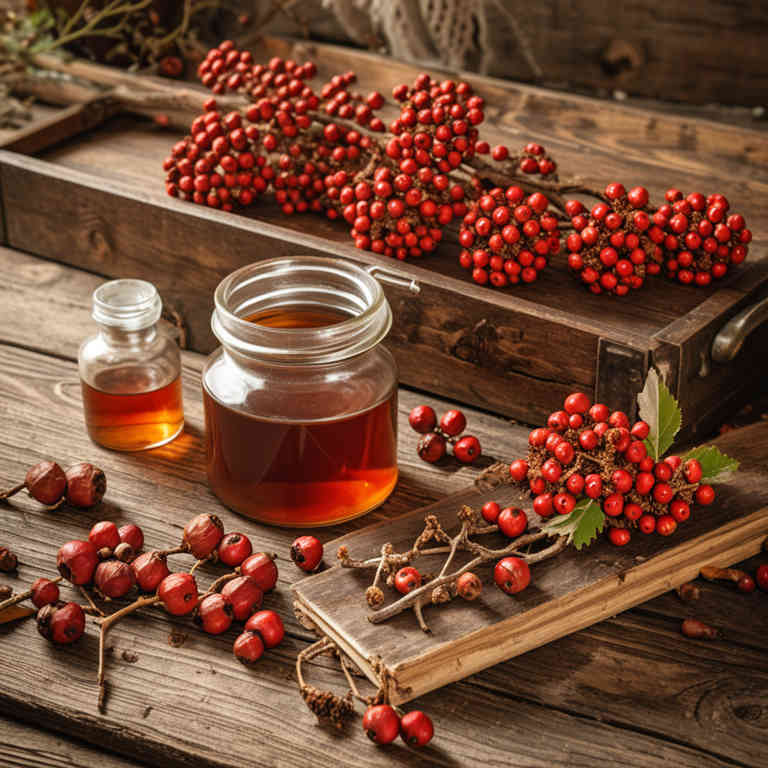Crataegus monogyna decoction for medicinal use

Crataegus monogyna decoction is a traditional herbal preparation made by boiling the leaves, flowers, or fruits of the hawthorn tree.
It is commonly used in herbalism to support cardiovascular health due to its potential effects on the heart and circulatory system. The decoction may help reduce stress on the heart and improve blood flow, making it a popular remedy for conditions like hypertension and mild heart-related issues. It is often prepared as a tea and can be consumed regularly under the guidance of a qualified herbalist.
This preparation has a long history in European folk medicine and is valued for its calming and circulatory benefits.
Uses
Crataegus monogyna decoction has been used to treat cardiovascular conditions, particularly heart-related disorders, for centuries.
Historically, it was valued in traditional European medicine for its purported ability to strengthen the heart and improve circulation. In traditional herbal practices, it was often prepared from the leaves, flowers, and berries of the hawthorn tree and used to alleviate symptoms of angina and arrhythmia. Modern studies have supported its use in managing hypertension and improving cardiac function, leading to its inclusion in some contemporary herbal formulations.
Today, it remains a popular remedy in complementary and alternative medicine for supporting cardiovascular health.
Benefits
Crataegus monogyna decoction has health benefits such as improving cardiovascular health, reducing stress, and supporting digestive function.
It is traditionally used to promote heart health by strengthening the heart muscle and improving blood circulation. The decoction may also help in managing symptoms of anxiety and insomnia due to its calming effects on the nervous system. Additionally, it is believed to aid in digestion by stimulating the production of digestive enzymes.
This herbal preparation is often used in traditional medicine for its potential to enhance overall well-being and support the body's natural healing processes.
Constituents
Crataegus monogyna decoction active constituents include flavonoids, proanthocyanidins, triterpenes, and ursolic acid.
These compounds contribute to the decoction's reputation for supporting cardiovascular health by improving blood flow and reducing arterial stiffness. The flavonoids and proanthocyanidins act as antioxidants, protecting cells from oxidative stress. Triterpenes may help in reducing inflammation, while ursolic acid has been associated with potential anti-inflammatory and cardioprotective effects.
This herbal preparation is traditionally used to support heart function and may aid in managing conditions such as hypertension and arrhythmia.
Preparation
To make Crataegus monogyna decoction, start by gathering 1 to 2 tablespoons of dried Crataegus monogyna berries, ensuring they are clean and free from impurities.
Place the berries in a pot and add about 1 liter of water, bringing the mixture to a gentle boil. Reduce the heat and let it simmer for approximately 15 to 20 minutes, allowing the active compounds to extract into the water. Strain the liquid through a fine mesh strainer or cheesecloth to remove the plant material, and allow the decoction to cool before use.
This preparation can be consumed as a tea, typically 1 to 2 cups per day, depending on individual needs and guidance from a qualified herbalist or healthcare provider.
Side Effects
Crataegus monogyna decoction may lead to gastrointestinal discomfort, such as nausea, vomiting, or diarrhea, especially when taken in high doses.
It can also cause dizziness or headaches in some individuals due to its cardiovascular effects. Prolonged use might result in arrhythmias or interactions with medications, particularly those affecting the heart or blood pressure. It is important to consult a healthcare professional before using this preparation, especially for individuals with pre-existing heart conditions.
Additionally, allergic reactions, including skin rashes or respiratory issues, may occur in sensitive individuals.